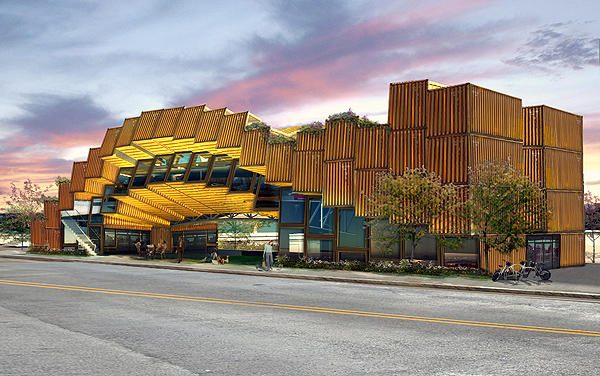
In an effort to reduce the environmental impact of architecture, architects have been coming up with futuristic designs that have a low carbon footprint. This change in strategy comes courtesy of research groups who are working hard to develop next-gen technologies that can help these architects realize their green dreams. From sustainable concrete to systems like BIPV, these green technologies promise green buildings of the future.
Some of the advancements in Green building technology are listed below:
1. Green Building materials
Meld USA known for creating ecofriendly concrete products launched its latest development called Ecox. Ecox is basically made from a precast material composed of 70% post-consumer and recycled cement and glass.These materials are mainly used in the manufacturing process of concrete products that are supposed to be perfectly ordered, and in fixtures and accessories. From house owners to businessman, all like to order these ecofriendly products which are much harmless when compared to other concrete products.
Another step taken toward a green environment is the carbon sense solution, which is developed to store carbon.This technology is expected to suck 1% of Carbon Emissions in the atmosphere each year. This technology is said to provide high resistance to cracking and shrinking, more durability, and it is less permeable to water.
2. Vertical farming
This kind of advancement is made in countries which lack water like Dubai. So in countries like Dubai the fresh water is obtained by converting the sea water.To do this a vertical farm is established in Dubai which uses sea water to cool and humidify greenhouse gases and converts the humidity into fresh water to irrigate crops.The concept behind this is simple.The air is first cooled and humidified along with seawater providing basic conditions for the growth of plants.This air mixed with warm dry air makes the area more hot and then this hot air is condensed until drops of fresh water are obtained. Water scrapers built in various countries is another way of using green environment effectively.
3. Self-sustainable building technique
One of the famous building built using this concept is the Madan Technology Center building, which is a new benchmark in green building design. Its unique feature is that it is made up of concrete flower beds which is rare to see.The troughs are made from recycled products and rain water harvesting process is followed to water the flowerbeds and the surrounding lawns. Buildings like skyscraper are used to harvest solar and wind energy to meet the power consumption effectively. It saves energy and relies on natural resources.
4. Solar 2 Shape changing building to harvest solar energy
Dubai is becoming an architectural hub with all its new ecofriendly buildings and has gained lots of attention for same reason.The skyscraper and the rotating tower are making the news.The building named “Rotating tower” is capable of of rotating around its central axis.The building will be continuously in motion which changes the shape of the building.This helps the building to have a very high resistance to earthquakes as each floor rotates independently.This building will be entirely powered by sun and wind energy and it is estimated that the building will generate 10 times more energy than required to power it and thus making it a positive energy building.
5. House/skyscraper in the ocean
The green building is not only limited to land. A floating underwater skyscraper has been developed by Zigloo and is named “The Gyre”.This will bring the scientists and the vacationers together in ocean without even polluting it and to understand the ocean better.The peak depth is 400 m and the development will provide a comfortable working environment including restaurants, gardens and recreation centers.This building will harvest renewable energy from the sun, wind, and tides. Rainwater is also harvested and a storage basin for fresh water is constructed at the deepest portion of the structure.




